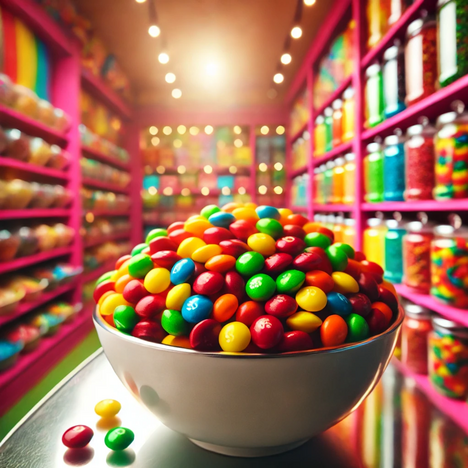Skittles

Skittles, the colorful, sugary treats popular among humans for their variety of flavors and bright colors, raise an important question for responsible dog owners: How safe is this rainbow of sugar for our four-legged friend? In this article, we take a deep dive into the world of Skittles, explain what they are, and discuss in detail the potential pros and cons of their consumption by dogs.
Sweet temptation on four paws
Skittles, a staple on confectionery shelves since their introduction in the 1970s, are known for their crunchy sugar coating and juicy filling. Each color represents a different flavor, from sour to sweet, making Skittles a favorite snack among young and old. But while humans can easily enjoy the colorful variety, dogs have much more at stake.
What are Skittles?
A look into the sugar rainbow
Skittles are small, round sweets with a hard sugar coating and a soft, sugary center. They come in different flavors and colors, with each color representing a specific fruit flavor. The main ingredients are sugar, syrup and artificial flavors, along with various colorants that give them their characteristic brightness.
The joy of snacking
For people, Skittles offer an easy treat and a quick energy boost, thanks to their high sugar content. They are a popular choice for parties, movie nights or simply as a reward after a long day. Their popularity extends worldwide, with a variety of special editions and flavors adding to their appeal.
Benefits of Skittles for dogs: A short term pleasure with a long term cost
While at first glance there are no direct benefits for dogs to eat Skittles, it could be argued that the pleasure they get from chewing or playing with the colorful balls could be seen as a short-term benefit. However, this fleeting pleasure comes with significant risks.
Disadvantages of Skittles for dogs
The sugar and sweetener content
Skittles contain a high amount of sugar, which can lead to a number of health problems in dogs, including tooth decay, weight gain and, in the worst cases, diabetes. In addition, some types of Skittles contain artificial sweeteners such as xylitol, which is extremely toxic to dogs and can be life-threatening even in small amounts.
Artificial colors and flavors
The bright colors and intense flavors of Skittles come from artificial additives that are difficult for dogs to digest and can cause allergic reactions or gastrointestinal distress.
Choking hazard
Due to their size and hardness, Skittles can pose a choking hazard to dogs, especially smaller breeds or puppies. The risk is further increased by the tendency of dogs to swallow food without chewing thoroughly.
An unnecessary risk
Although the colorful Skittles may be a source of joy for humans, it is clear that they pose an unnecessary risk to dogs. The short-term pleasure a dog may feel from playing with them or trying to eat them is far overshadowed by the long-term health risks. As a responsible dog owner, it is important to ensure that our animal companions are fed a balanced diet that is suitable for them and kept away from potentially dangerous foods. Ultimately, there are safer and healthier ways to share love and joy with our best friend without putting their health at risk.
If you notice any signs of hypersensitivity or poisoning in your dog, you should see your vet immediately. We are not a substitute for a vet, but we try to be as accurate as possible. Every dog reacts differently and we recommend you get a second opinion or consult your vet if in doubt.
Stay healthy and take good care of your four-legged friend!😊